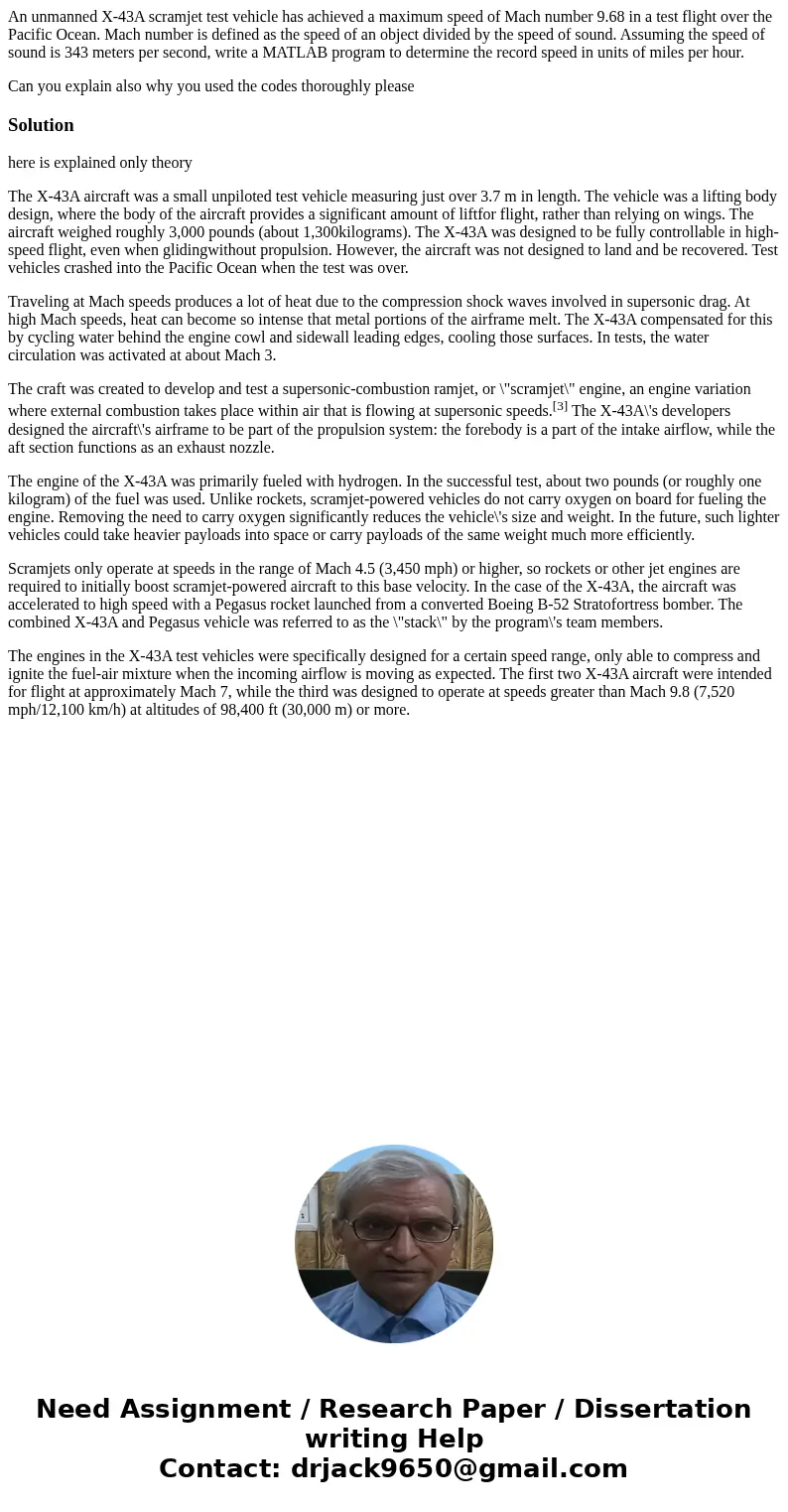An unmanned X43A scramjet test vehicle has achieved a maximu
An unmanned X-43A scramjet test vehicle has achieved a maximum speed of Mach number 9.68 in a test flight over the Pacific Ocean. Mach number is defined as the speed of an object divided by the speed of sound. Assuming the speed of sound is 343 meters per second, write a MATLAB program to determine the record speed in units of miles per hour.
Can you explain also why you used the codes thoroughly please
Solution
here is explained only theory
The X-43A aircraft was a small unpiloted test vehicle measuring just over 3.7 m in length. The vehicle was a lifting body design, where the body of the aircraft provides a significant amount of liftfor flight, rather than relying on wings. The aircraft weighed roughly 3,000 pounds (about 1,300kilograms). The X-43A was designed to be fully controllable in high-speed flight, even when glidingwithout propulsion. However, the aircraft was not designed to land and be recovered. Test vehicles crashed into the Pacific Ocean when the test was over.
Traveling at Mach speeds produces a lot of heat due to the compression shock waves involved in supersonic drag. At high Mach speeds, heat can become so intense that metal portions of the airframe melt. The X-43A compensated for this by cycling water behind the engine cowl and sidewall leading edges, cooling those surfaces. In tests, the water circulation was activated at about Mach 3.
The craft was created to develop and test a supersonic-combustion ramjet, or \"scramjet\" engine, an engine variation where external combustion takes place within air that is flowing at supersonic speeds.[3] The X-43A\'s developers designed the aircraft\'s airframe to be part of the propulsion system: the forebody is a part of the intake airflow, while the aft section functions as an exhaust nozzle.
The engine of the X-43A was primarily fueled with hydrogen. In the successful test, about two pounds (or roughly one kilogram) of the fuel was used. Unlike rockets, scramjet-powered vehicles do not carry oxygen on board for fueling the engine. Removing the need to carry oxygen significantly reduces the vehicle\'s size and weight. In the future, such lighter vehicles could take heavier payloads into space or carry payloads of the same weight much more efficiently.
Scramjets only operate at speeds in the range of Mach 4.5 (3,450 mph) or higher, so rockets or other jet engines are required to initially boost scramjet-powered aircraft to this base velocity. In the case of the X-43A, the aircraft was accelerated to high speed with a Pegasus rocket launched from a converted Boeing B-52 Stratofortress bomber. The combined X-43A and Pegasus vehicle was referred to as the \"stack\" by the program\'s team members.
The engines in the X-43A test vehicles were specifically designed for a certain speed range, only able to compress and ignite the fuel-air mixture when the incoming airflow is moving as expected. The first two X-43A aircraft were intended for flight at approximately Mach 7, while the third was designed to operate at speeds greater than Mach 9.8 (7,520 mph/12,100 km/h) at altitudes of 98,400 ft (30,000 m) or more.

 Homework Sourse
Homework Sourse